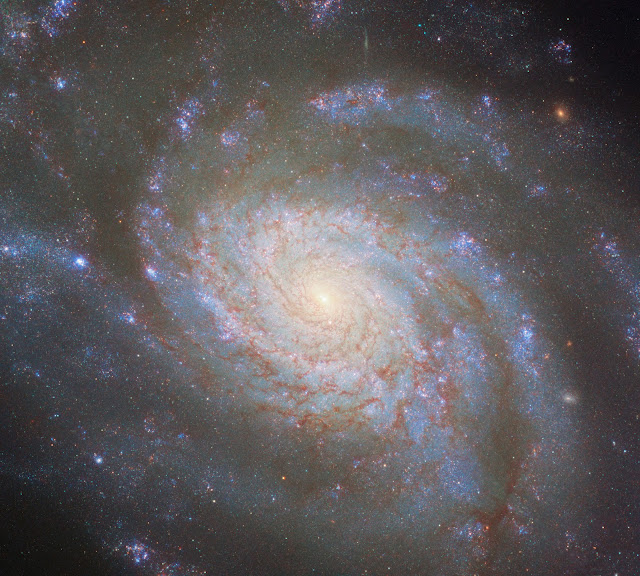Spiral Galaxy NGC 3810 & Supernova SN2022zut in Leo | Hubble
NGC 3810, the galaxy featured in this image, was the host of a Type Ia supernova in 2022. In early 2023 Hubble focused on this and a number of other galaxies to closely examine recent Type Ia supernovae. This kind of supernova results from a white dwarf exploding, and they all have a very consistent brightness. It allows them to be used to measure distances. We know how bright a Type Ia supernova should be, so we can tell how far away it must be from how dim it appears. One uncertainty in this method is that intergalactic dust in between Earth and a supernova blocks a portion of its light.
How much of the reduction in light is caused by distance, and how much by dust? With the help of Hubble, there is a clever workaround. We can take images of the same Type Ia supernovae in ultraviolet light, almost completely blocked by dust, and in infrared light that passes through dust almost unaffected. By carefully noting how much light comes through at each wavelength, the relationship between supernova brightness and distance can be calibrated to account for dust. Hubble can observe these wavelengths of light in great detail with the same instrument. This makes it the perfect tool for this experiment, and indeed, the data is used to make this beautiful image of NGC 3810. You can see 2022 supernova as a point of light just below the galactic nucleus and in the annotated image.
There are many ways to measure cosmic distances; because Type Ia supernovae are so bright, they are one of the most useful and accurate tools, when they are identified. Many other methods must be used as well, either as an independent check against other distance measurements or to measure at much closer or farther distances. One such method that also works for galaxies is comparing their rotation speed to their brightness; based on that method, NGC 3810 is found to be 50 million light-years from Earth.
Image Description: A spiral galaxy seen almost face-on. Large spiral arms whirl out from its center, filling the scene. They glow faintly blue from the stars within. There are small bright patches of blue and pink marking areas of star formation. They are overlaid with thin filaments of dark reddish dust that block light. The galaxy’s center shines brightly white.
Image Credit: ESA/Hubble & NASA, D. Sand, R. J. Foley
Release Date: July 8, 2024
#NASA #ESA #Astronomy #Space #Hubble #Galaxies #Galaxy #NGC3810 #SpiralGalaxy #Supernovae #Supernova #TypeIASupernova #WhiteDwarfStar #Leo #Constellation #Cosmos #Universe #Astrophysics #HST #SpaceTelescopes #GSFC #STScI #UnitedStates #Europe #STEM #Education




.jpg)






